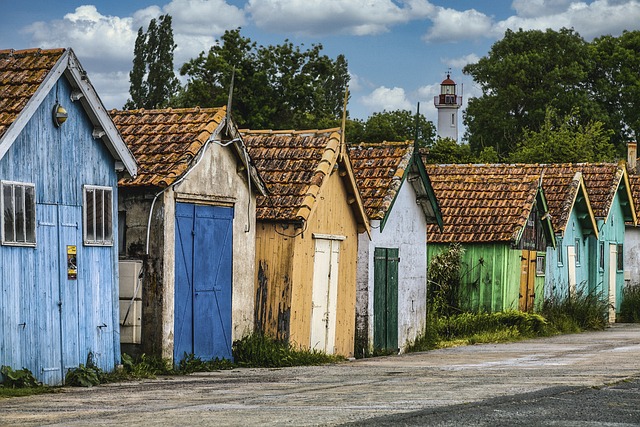TL;DR:
Understanding storm safety involves recognizing and mitigating potential hazards like strong winds, heavy rainfall, and lightning. Home weather protection starts with inspecting and fortifying outdoor structures, securing windows and doors, reinforcing roofs and gutters, and pruning trees. Review insurance policies to ensure adequate coverage for storm damage, considering local risks. Proactive measures like anchoring outdoor items, bringing in loose furniture, and having emergency supplies and a family plan enhance resilience and safety during severe weather.
“In a world where severe storms can cause significant damage, ensuring your safety and protecting your property is paramount. This comprehensive guide delves into the essential aspects of home weather protection, offering expert insights on fortifying your haven against nature’s fury.
From identifying potential hazards and implementing crucial weatherproofing steps to securing outdoor structures and insuring against storm damage, we equip you with the knowledge to stay safe during severe weather. Prepare, protect, and remain resilient with these expert-backed strategies.”
- Understanding Storm Safety: Identifying Potential Hazards
- Fortifying Your Home: Essential Weatherproofing Steps
- Expert Tips for Securing Outdoor Structures and Fixtures
- Protecting Your Property: Insuring Against Storm Damage
- Staying Safe During Severe Weather: A Comprehensive Guide
Understanding Storm Safety: Identifying Potential Hazards

Understanding Storm Safety: Identifying Potential Hazards
In preparation for storms, it’s crucial to understand the various hazards they can bring. Strong winds, heavy rainfall, and lightning strikes pose significant risks to both property and personal safety. One of the first steps in ensuring home weather protection is identifying these potential dangers. Look out for loose or damaged outdoor structures like patio furniture, shed roofs, or tree branches that could be blown over by strong gusts.
Additionally, ensure your home is equipped with robust windows and doors capable of resisting high-speed winds and flying debris. Gaping holes or weak points in your property’s exterior can turn a storm into a disaster. Regular maintenance and reinforcement of these areas are essential components of comprehensive home weather protection strategies.
Fortifying Your Home: Essential Weatherproofing Steps

Fortifying your home against storms is crucial for ensuring safety and protecting your property. The first step in achieving robust home weather protection is reinforcing your roof. Make sure it’s securely attached with strong fasteners, and consider adding impact-resistant shingles or tiles to safeguard against flying debris. Regularly inspect and repair any damaged gutters and downspouts to prevent water accumulation around your foundation.
Additionally, sealing windows and doors with storm shutters or high-quality weatherstripping is vital. These measures prevent wind and rainwater from infiltrating your home. Insulating exterior walls and attics also plays a significant role in home weather protection, as it helps maintain a consistent indoor temperature and reduces the risk of water intrusion during severe storms.
Expert Tips for Securing Outdoor Structures and Fixtures

Securing outdoor structures and fixtures is a vital step in preparing for severe storms, ensuring your home’s weather protection. Experts recommend beginning with a thorough inspection to identify potential vulnerabilities. Look for loose or damaged components such as shingles, gutters, and downspouts, which can become hazardous during high winds. Regular maintenance is key; ensure all bolts and fasteners are tight, and consider upgrading older fixtures with storm-rated alternatives.
For added protection, implement robust anchoring systems, especially for larger structures like sheds or patio furniture. Use high-quality chains and anchors to secure these items firmly to the ground. Trees and shrubs around your property should also be pruned, removing any dead or weak branches that could fall and cause damage during a storm. These proactive measures will significantly enhance your home’s resilience against extreme weather conditions, offering peace of mind when storms are on the horizon.
Protecting Your Property: Insuring Against Storm Damage

Protecting your property from storm damage is a crucial aspect of ensuring safety during severe weather conditions. One of the most effective ways to do this is through adequate insurance coverage. Homeowners’ insurance policies often include provisions for weather-related incidents, but it’s essential to understand what’s covered and what isn’t. Wind, hail, lightning, and flood damage are typically included, but specific details vary between providers and policy types.
When reviewing or purchasing a home weather protection plan, pay close attention to the deductibles, coverage limits, and any exclusions related to storms. Consider your location, as some areas are more prone to severe storms than others. Upgrading your policy to include comprehensive storm coverage can offer peace of mind and financial security, ensuring that your home and belongings are protected should a storm cause damage.
Staying Safe During Severe Weather: A Comprehensive Guide

Staying safe during severe weather is paramount, especially when storms threaten your area. As a comprehensive guide, this section offers essential tips for ensuring home weather protection. First, identify and secure potential hazards around your property, such as loose items in your yard or balcony that could be blown away, causing damage or injury. Bring outdoor furniture, potted plants, and decorations inside to prevent them from becoming projectiles during high winds.
Additionally, ensure your home is equipped with robust windows and doors designed to withstand intense weather conditions. Install storm shutters or hurricane shutters if you live in an area prone to hurricanes. These protective barriers can significantly reduce the risk of broken glass and flying debris entering your home. Moreover, keep flashlights, extra batteries, a battery-powered radio, and emergency supplies readily available. Familiarize yourself with local emergency procedures and have a family plan in place for effective communication and safe evacuation if needed.
Ensuring safety during storms involves a multi-faceted approach. By understanding storm hazards, fortifying your home with essential weatherproofing steps, securing outdoor structures and fixtures according to expert tips, and insuring against potential damage, you can protect your property and stay safe during severe weather. Implement these measures for comprehensive home weather protection and peace of mind.
